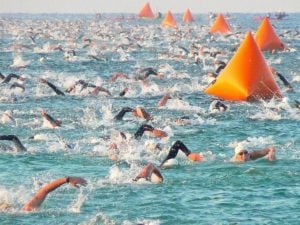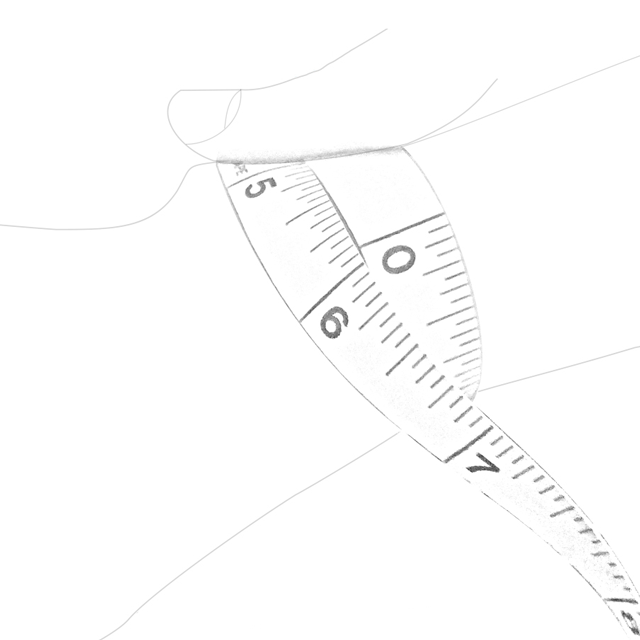Open Water Swim Training
Please enjoy the guest blog written by Ryan Ross. Ryan Ross is a USA Triathlon Level 2 and Ironman Certified Triathlon Coach. He is the owner of Coast To Coast Triathlon located in Olathe, KS. Ryan spends his days helping triathlete of all ages and abilities reach for their greatest aspirations. You can learn more about Ryan at www.coasttocoasttriathlon.com.
You can do this.
Open water swimming for a new triathlete can be a daunting task. But I will remind you – every weekend across the world newer triathletes are making the plunge. I know that most would describe their first few triathlon swims as pretty overwhelming. But I can tell you this – they loved their triathlon experience and will be back for more!
If you want significantly raise the chances that your journey to success in open water comes as quickly as possible –follow these suggestions.
Before Race Day
- Practice in open water before race day! This is a must! Do not participate in an open water swim race until you have comfortably swam in open water in training at least two times.
- Choose the right goggles. These are an important piece of equipment! Use goggles that are not brand new, but not worn out either. Worn out goggles can easily leak. De fog your goggles with anti-fog spray prior to the race to help ensure they do not fog up. Consider getting goggles that are wrap style and offer a wider range of vision than regular goggles.
- Get comfortable in your wetsuit. Make sure the chest and neck are not too tight. Do this well before race day. Do not come to race day with a wet suit you have not practiced in!
- Start to learn the course. How many loops am I swimming? Which direction? If your event has more than one distance, how do you distinguish between the different swim courses? Is there a run along the beach between loops? Often times there will be different buoys set up for different distances. Know the course ideally before race day, and verify it with race staff once you arrive. Know the swim course in advance.
- Learn to breathe on both sides in training. You do not have to become a 100% of the time bi-lateral breather. It will help you to have a certain level of comfort with your off side in case your strong side has waves crashing in on you, or other swimmers brushing up again your strong side.
Race Morning
- Lower your anxiety! (I say lower, because it is counterproductive to try to get it to go away completely). Perform deep belly breaths prior to the race while waiting on the beach. Breathe in deeply for 5 seconds, hold it, then blow it out completely. Hold your exhale at least 5 seconds. Do this prior to entering the water, and while you are waiting for your wave to start
- Stay in your world! Do not focus on other participants. There is nothing less important than the participants around you. Zone them out. Think of it as your own little world. It is you and the water – your race and your time.
- Finish learning the course. Which buoy is your turn buoy? What does the swim finish chute look like from the water? Do you need to verify anything related to the course with the race director? I can’t tell you how many times I have been at the beach area and participants are trying to figure out where they are turning, which buoys apply to their wave, which direction they are going etc. Know the swim course in advance.
- Warm up. Get used to the feel of the water and the temperature. Spend some time treading in the water or doing some very easy swimming. Do not make your first plunge into the water when the gun goes off. Especially in cold water – this can send a shock through the system that can easily heighten your anxiety and destroy your swim. Warm up your swim always.
And The Gun Goes Off!
- Relax and breathe! Never stop breathing! I recommend breathing with every stroke to your strong side. Just like the pool – exhale air when your face is in the water, and inhale air when you rotate to breathe. You would never stop breathing when cycling or running – swimming is no different!
- Sight properly. To sight properly , pop your head up and look forward quickly. The split second you spot the buoy or landmark you are looking for, rotate right or left into your rotation. Don’t look around! Be quick. If you start looking around your legs will drop and you become an anchor in the water. Get your glimpse of what you need to and get into rotation. No looking around!
- Protect your head from getting kicked by really holding your arms in extension straight out from your shoulder with each stroke. It is okay to hold that extended position momentarily if you feel there could be kicking feet in the area. Coincidentally, this ‘catch up’ style of stroke promotes a lower HR as well.
What should I do if I get in trouble in the water?
- Swim to a kayak and hold on while you gather yourself. Do not hesitate to do this!
- Float on your back. Take some time to breathe deep. Remember – if your wetsuit is on, you can’t sink!
- You can consider switching to a breast stroke style of stroke.
You will notice there are more ‘tasks’ to concern yourself with prior to race day than there is once that gun goes off. This is because it is your preparation that will make you successful on race day! Make race day a culmination of your preparation, and it will go great!
You can do this!
The post Open Water Swim Training appeared first on Garmin Blog.
Sample Block Quote
Praesent vestibulum congue tellus at fringilla. Curabitur vitae semper sem, eu convallis est. Cras felis nunc commodo loremous convallis vitae interdum non nisl. Maecenas ac est sit amet augue pharetra convallis nec danos.
Sample Paragraph Text
Praesent vestibulum congue tellus at fringilla. Curabitur vitae semper sem, eu convallis est. Cras felis nunc commodo eu convallis vitae interdum non nisl. Maecenas ac est sit amet augue pharetra convallis nec danos dui.
Cras suscipit quam et turpis eleifend vitae malesuada magna congue. Damus id ullamcorper neque. Sed vitae mi a mi pretium aliquet ac sed elitos. Pellentesque nulla eros accumsan quis justo at tincidunt lobortis denimes loremous. Suspendisse vestibulum lectus in lectus volutpat, ut dapibus purus pulvinar. Vestibulum sit amet auctor ipsum.


